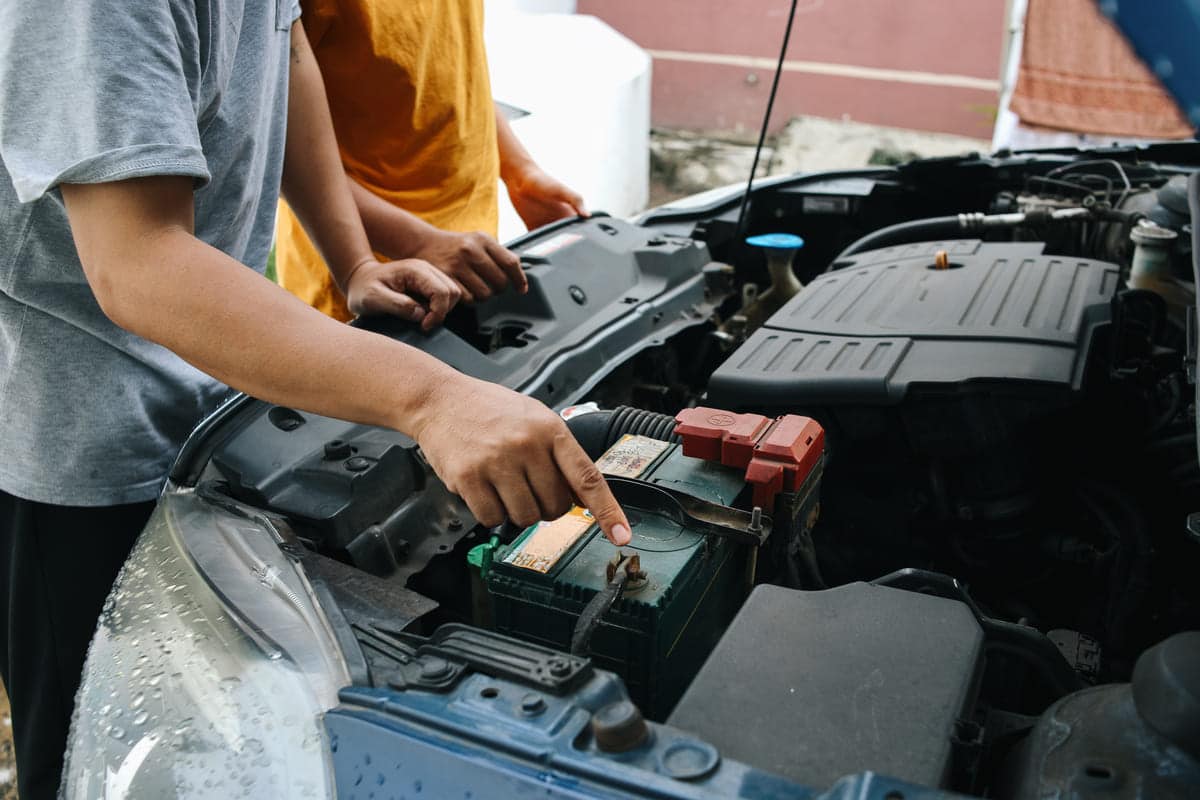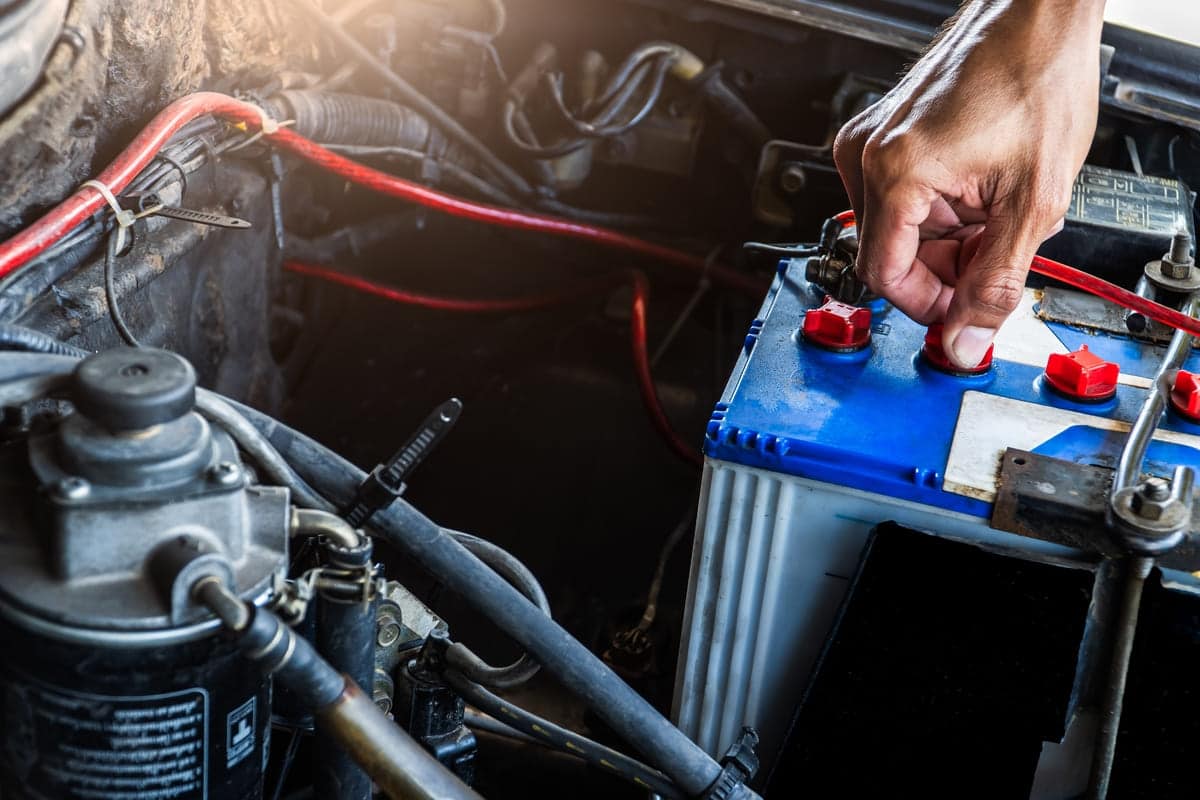An Automotive battery also known as a car battery stores energy and provides current to start the engine. They power lights, radios and other . Innovations in these batteries make vehicles more reliable and environmentally friendly.
What is an Automotive Battery?
An automotive battery is also known as starter battery, auxiliary battery or EV auxiliary battery. It’s a rechargeable device that powers a vehicle’s and electronics. It stores electrical energy and provides current to start the engine. Without it, a vehicle can’t function.
Most modern automotive batteries are lead-acid batteries. It has lead plates submerged in an electrolyte solution. This setup generates a chemical reaction that produces electricity. When you start your , the battery sends a burst of power to the starter motor and ignites the engine.
Automotive batteries also power electronic systems when the engine is off. These include headlamps, radios and navigation systems. They maintain voltage stability so all systems will run smoothly.
Over time batteries lose their ability to hold a charge. Regular maintenance and timely replacement are key. Signs of a failing battery are slow engine cranking and dim lights. Proper care can extend the life of the battery so the vehicle will be reliable.
References
- Automotive battery. Wikipedia. Retrieved from
- Car Battery. ScienceDirect. Retrieved from
History of Automotive Batteries
Automotive batteries have been part of vehicle development. Its evolution reflects technological advancements and growing environmental concerns.
The first automotive batteries came out in the early 20th century. In 1912, Cadillac introduced the first car with an electric starter which requires a rechargeable battery. This innovation replaced hand cranked engines making cars more user friendly and accessible.
Automotive batteries have evolved since then. Early batteries were simple lead-acid design. Over time improvements in materials and technology make them more efficient and longer lasting. The 1970s saw the introduction of maintenance-free batteries. Recently, advancements in lithium-ion technology have given birth to batteries for electric vehicles (EVs) with higher energy density and faster charging time.
Several companies are in the automotive battery industry. Johnson Controls is a major player in lead-acid batteries. Panasonic and LG Chem are big in lithium-ion batteries, especially for . Tesla together with Panasonic is also a key player in automotive battery technology. They are still innovating and improving performance and sustainability in the automotive world.
References
- Automotive battery: History. Retrieved from
Types of Batteries in Cars
Automotive batteries comes in different compositions and applications, each has its own use. Knowing the types will help you choose the right battery for your vehicle.
- Lead Acid Battery: Lead acid batteries are the most common in cars. It has lead plates submerged in sulfuric acid that provides high current for engine starting. These batteries are reliable and affordable.
- Lithium-ion Battery: Lithium-ion batteries are used in electric vehicles (EVs). It has higher energy density, faster charging time and longer lifespan compared to others. These batteries are also light weight making the vehicle more efficient.
- SLI Battery: Starting, , and Ignition (SLI) batteries are designed to provide short bursts of power. It starts the engine and powers electrical components like lights and radios. SLI battery is a type of lead-acid battery.
- Deep Cycle Battery: Deep cycle batteries provide sustained power for a long time. Unlike SLI batteries, they can tolerate deep discharge and frequent recharging. These batteries are ideal for marine and RV and can support motor vehicle accessories.
- VRLA Battery: Valve-Regulated Lead Acid (VRLA) batteries are sealed and maintenance-free. It includes Absorbed Glass Mat (AGM) and Gel batteries. VRLA battery is spill-proof and safe for various automotive uses.
- Nickel Metal Hydride Battery: Nickel metal hydride (NiMH) battery is used in hybrid vehicles. It has better energy density than lead acid but less than lithium-ion. NiMH battery is durable and has good lifespan.
- Silver Calcium Battery: Silver calcium batteries use silver-calcium alloy plates that improve durability and corrosion resistance. These advanced lead acid batteries have longer life and better performance, especially in high temperature conditions.
References
- Types of Car Batteries. Spinny. Retrieved from

How an Automotive Battery Works?
An automotive battery stores chemical energy. When you turn the ignition key, it triggers a chemical reaction inside the battery. This reaction converts chemical energy into electrical energy.
The battery sends a high current to the starter motor. The starter motor cranks the engine, and ignites the fuel. Once the engine is running, the takes over.
The alternator generates electrical power to recharge the battery and powers the car’s electrical system. The battery also regulates voltage to ensure constant power.
During this process, the lead plates and sulfuric acid react and produce electricity. This cycle happens every time you start your car and makes it reliable.
References
- Everything You Need to Know About Car Batteries. Firestone Complete Auto Care. Retrieved from
What are the Parts of an Automotive Battery?
Here are the parts of an auxiliary battery:
- Battery Case: The battery case holds all the internal components. It is made of durable plastic that is chemical and temperature resistant. The case protects the battery from physical damage.
- Positive and Negative Terminals: The positive and negative terminals is where the vehicle’s electrical system connects. These terminals allow the flow of electric current in and out of the battery.
- Electrolyte (Sulfuric Acid and Water): The electrolyte is a mixture of sulfuric acid and water. It reacts with the battery plates to produce electrical energy.
- Positive Plates (Lead Dioxide): Positive plates are coated with lead dioxide. It participates in the electrochemical reaction to generate electrical power.
- Negative Plates (Sponge Lead): Negative plates are made of sponge lead. It reacts with the electrolyte to produce electrical energy during the discharge cycle.
- Separators: Separator is a thin insulating material placed between the positive and negative plates. It prevents short circuiting while allowing the flow of ions during the chemical reaction.
- Cell Connectors: Cell connectors connect multiple cells in the battery. It ensures a continuous circuit and allows electricity to flow between cells.
- Battery Caps (for Vented Batteries): Battery caps cover the opening of vented batteries. It allows gas to escape while preventing electrolyte spillage.
- Electrolyte Reservoirs: Electrolyte reservoirs hold the electrolyte solution. It ensures the plates is submerged and the chemical reaction of the battery.
References
- Car Batteries. Auto Proto Way. Retrieved from
- Car Batteries: Components, Types, and Functions. JCBL Automoto. Retrieved from
What are the specifications of a car battery?
Car battery specifications include voltage, capacity, and cold cranking amps (CCA). Most car batteries have a voltage of 12 volts. Capacity measured in ampere-hours (Ah) is how long the battery can supply power.
Cold cranking amps (CCA) are the battery’s ability to start the engine in cold temperatures. A higher CCA value means better performance in freezing conditions. Reserve capacity (RC) is how long the battery can run the essential system if the alternator fails.
Battery size and terminal type must match the vehicle’s requirements. Always check the manufacturer’s specifications for the correct fit and performance.
References
- The Main Functions of a Car Battery. CAA Magazine. Retrieved from https://caamagazine.com/on/answers/the-main-functions-of-a-car-battery


